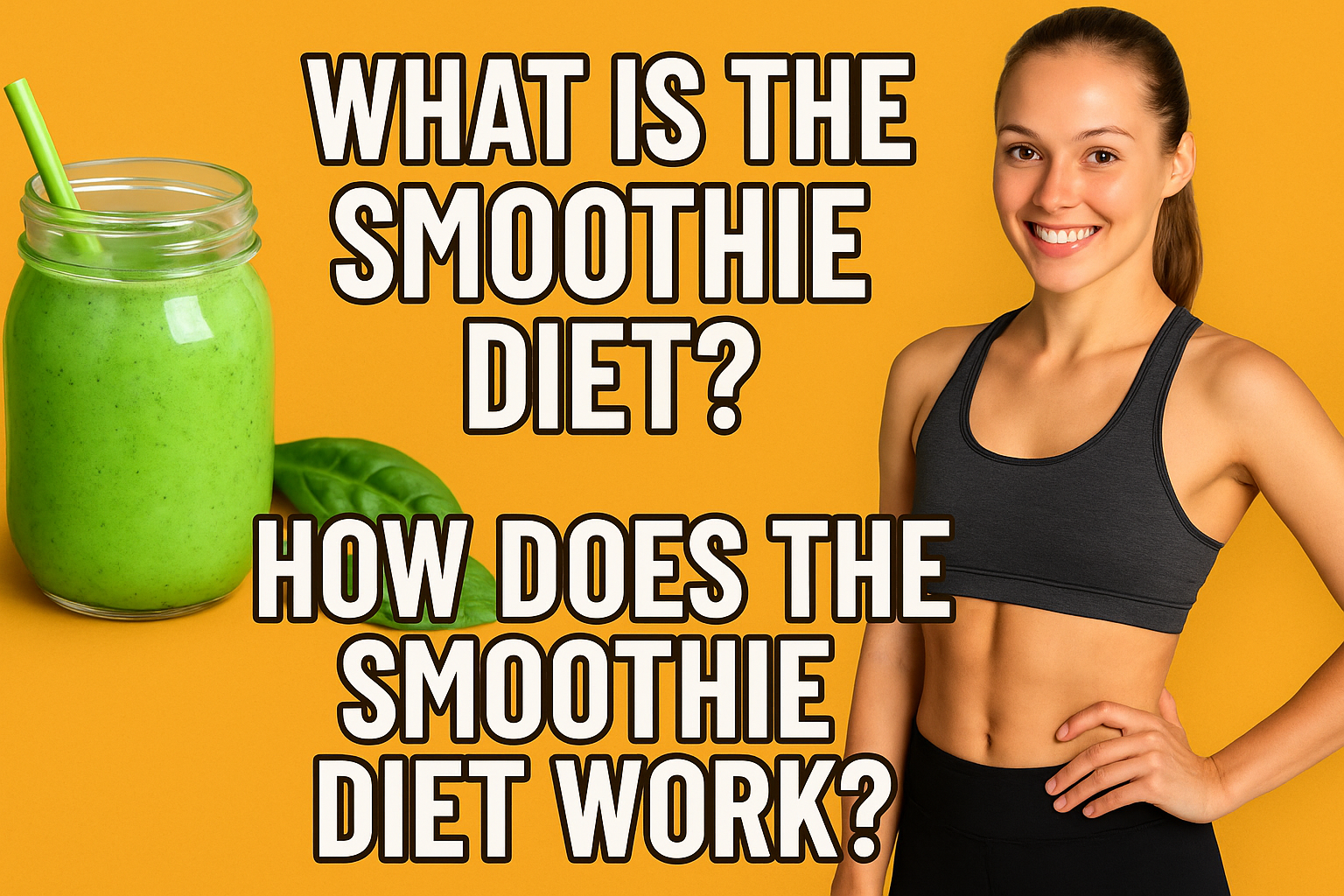The Smoothie Diet is a short-term, meal-replacement plan that typically involves replacing 1–2 meals per day with nutrient-dense smoothies. Its goal is to promote weight loss, detoxify the body, and support healthy eating habits. Most popular among these is the 21-Day Smoothie Diet, which promises rapid weight loss using specific recipes.
✅ Key Features of the Smoothie Diet:
Meal Replacement: Most plans involve replacing breakfast and lunch with smoothies.
Duration: Typically followed for 3 to 4 weeks (21 to 30 days).
Ingredients: Fruits, vegetables, plant-based proteins, nut butters, flax seeds, oats, yogurt, and superfoods (like spirulina or chia).
Calorie Control: Smoothies generally range from 250–400 calories per serving.
📊 Why People Choose It:
Convenience: Easy to prepare and consume.
Quick Weight Loss: Claimed average loss is 10–15 lbs in 3 weeks, depending on starting weight and adherence.
Improved Digestion: High fiber content supports bowel regularity.
Increased Nutrient Intake: High in antioxidants, vitamins (A, C, K), and minerals like potassium and magnesium.
🧪 Evidence and Research:
While there’s no peer-reviewed research specific to commercial smoothie diets, general data on meal replacement and liquid diets show promising results:
A 2019 meta-analysis (Nutrition Journal) concluded that meal replacement plans can lead to 7.6% more weight loss over 3 months than standard calorie-restriction diets.
CDC guidelines indicate that 1–2 pounds per week is a sustainable and safe weight loss target, which aligns with the smoothie diet’s claims.
⚖️ Pros and Cons:
Pros:
High in fiber and water, aiding satiety.
Easy way to increase fruit/vegetable intake.
Controlled calorie portions.
Cons:
May lack protein if not properly balanced.
Can cause fatigue if calories are too low.
Not ideal as a long-term, full-meal replacement plan.
📌 Who is it for?
Adults looking for a structured weight loss kickstart.
People who struggle with eating fruits/veggies daily.
Busy individuals needing a grab-and-go healthy option.
💡 Expert Tip:
To make your smoothie more nutritionally complete:
Add 20–30g of protein (from whey, pea, or Greek yogurt).
Include 1 tbsp flaxseed or chia for omega-3s and fiber.
Use unsweetened almond milk to keep sugar low.
How Does the Smoothie Diet Work?
The Smoothie Diet works by strategically replacing 1–2 daily meals with calorie-controlled, nutrient-dense smoothies to reduce total daily caloric intake while still supplying the body with essential nutrients. It leverages principles of portion control, high fiber intake, and whole-food nutrition to promote fat loss and improve overall health.
✅ Key Mechanisms Behind the Smoothie Diet
Caloric Deficit Creation
Weight loss occurs when calorie intake is less than calories burned.
Replacing two typical 600–800 calorie meals with 300–400 calorie smoothies can reduce daily intake by 500–1,000 calories, leading to a 1–2 pound weight loss per week, per CDC guidelines.
High Fiber and Satiety
Smoothies are rich in fiber from fruits, vegetables, oats, and flax/chia seeds.
Fiber slows digestion, reduces hunger, and supports gut health.
The Institute of Medicine recommends 25–38g of fiber per day, and a typical green smoothie contains 6–10g per serving.
Improved Nutrient Density
Unlike restrictive “crash” diets, smoothies offer a spectrum of vitamins (A, C, K, folate), antioxidants, and minerals.
This ensures metabolic efficiency and prevents deficiencies that could sabotage weight loss or energy.
Controlled Portion Sizes
Each smoothie has a pre-measured, consistent calorie profile.
This consistency helps reduce overeating or guessing meal portions.
Blood Sugar Stabilization
Including protein, healthy fats, and fiber helps maintain balanced blood glucose levels, preventing insulin spikes and crashes.
This supports fat metabolism and reduces cravings.
📊 Sample Daily Breakdown (Typical 21-Day Plan)
| Meal | Calories | Example |
|---|---|---|
| Breakfast | 300 | Green smoothie (spinach, banana, protein powder, almond milk) |
| Lunch | 350 | Berry smoothie (blueberries, Greek yogurt, oats, flax) |
| Dinner | 500–600 | Balanced whole food (grilled salmon, quinoa, veggies) |
| Snacks | 100–150 | Handful of almonds, boiled egg |
Estimated Daily Total: 1,200–1,400 kcal
Most adults burn 1,800–2,400 kcal/day, which creates a daily deficit of 600–1,200 kcal.
🧠 Psychological Benefit
Routine + Simplicity: Having a repeatable plan reduces decision fatigue.
Positive Feedback Loop: Early weight loss results can boost motivation and adherence.
⚠️ Important Considerations
Without proper planning, smoothies can be high in sugar (especially if using too much fruit or juice).
Protein intake must be sufficient to prevent muscle loss — aim for 0.8g–1.2g per kg of body weight.
The diet should be temporary (2–4 weeks) and followed by a transition to balanced whole-food meals.
🥼 Expert Tip:
To ensure a balanced smoothie, follow this formula:
1 cup greens + 1 cup low-GI fruit + 1 serving protein + 1 tbsp healthy fat + liquid base.
This helps maintain blood sugar and satiety.

